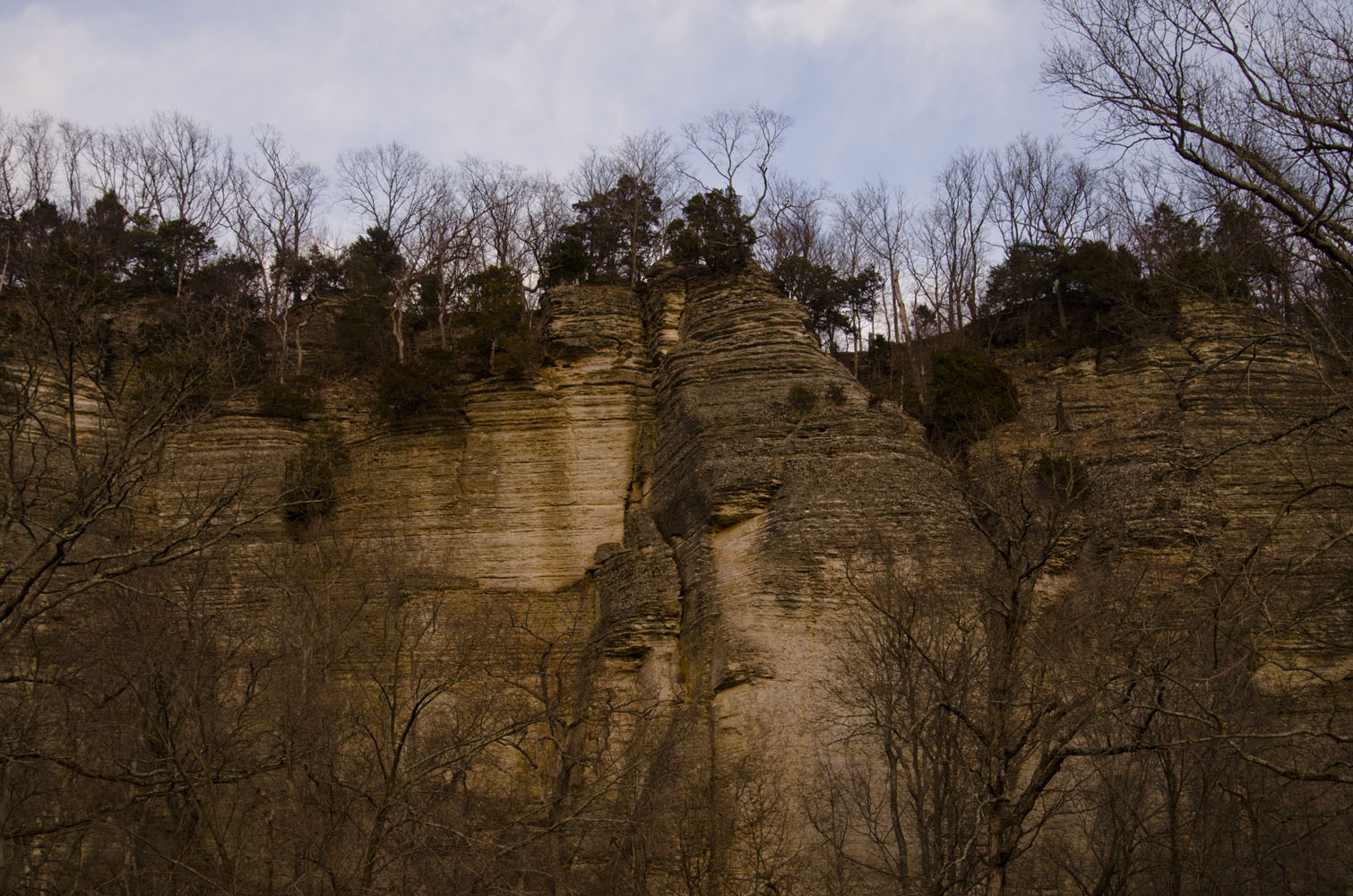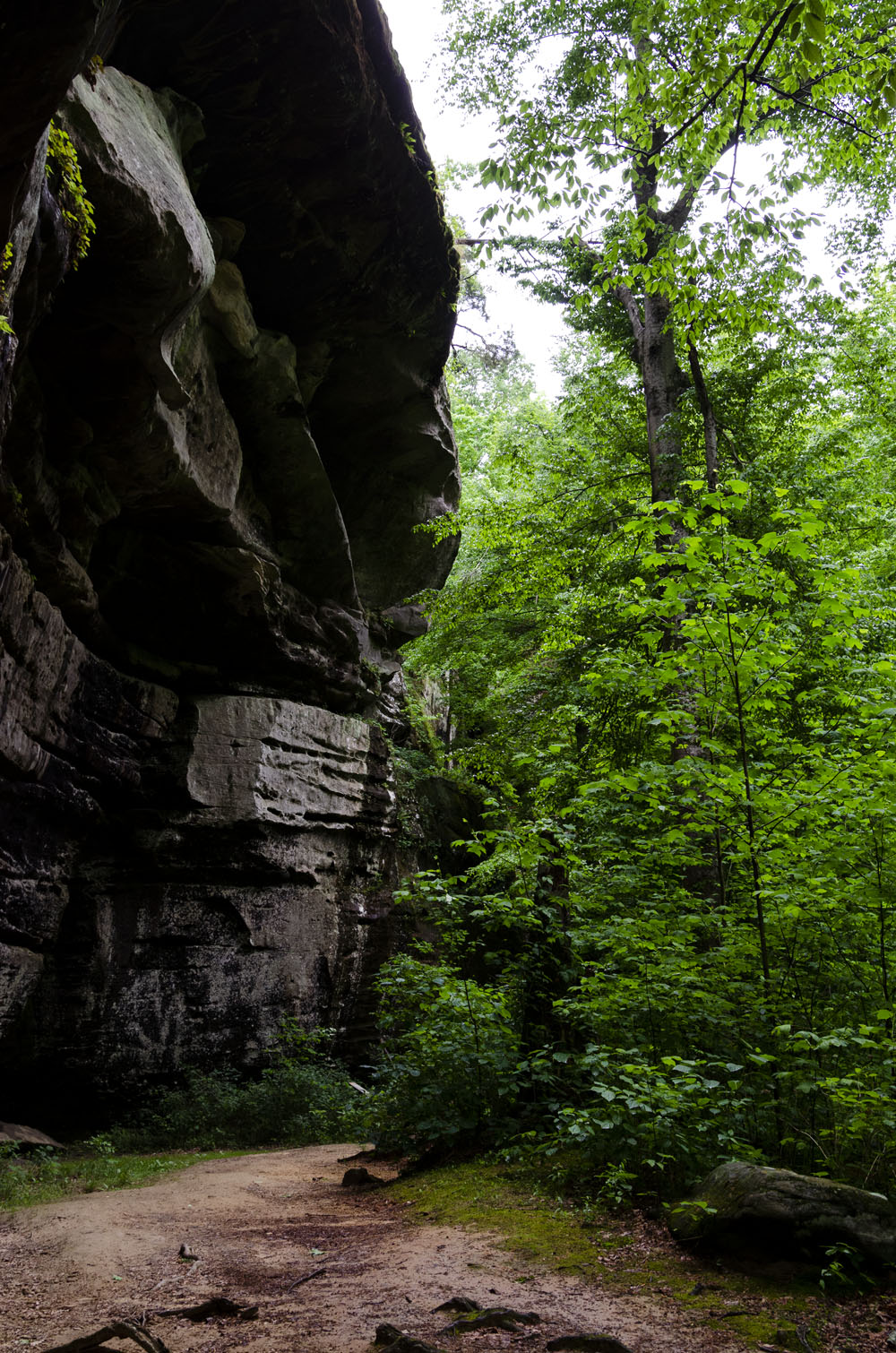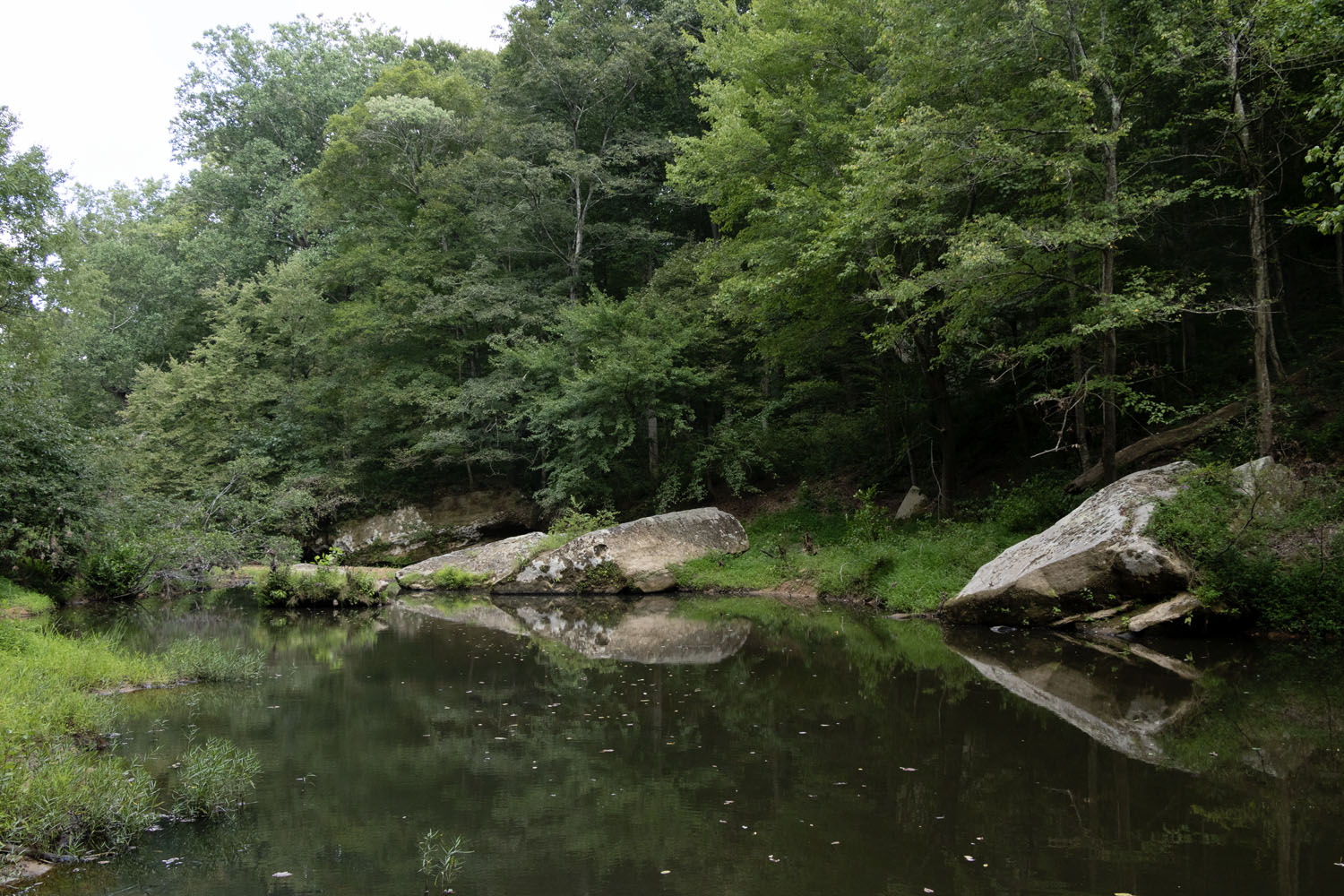While my car was in the shop for repairs, I spent my time putting together a list of locations that might be good for watching the eclipse. I knew I wanted to be somewhere tranquil and away from other people, a selfish conceit to have the whole experience to myself. The last thing I wanted to hear was other people cheering (or shoot fireworks, as I later learned my parents and siblings did), but to immerse myself in the eclipse's gentle but insistent change in the ecological schedule. There is no shortage of Southern Illinois parkland to lose oneself, but many of the more accessible scenic locations would probably be playing host to eclipse parties. If I wanted to have somewhere to myself, it would mean hiking my way back into more remote reaches of a park.
That idea risked running afowl of the weather. Mid-August weather in the area is not great for viewing astronomical events, especially ones in the afternoon. The hot and sticky summer airmass often fuels pop-up thunderstorms in the early to mid-afternoon. These often become part of the daily rhythm, since August weather pattern tends to be rather stagnant. If there are thunderstorms one day, there are probably going to be thunderstorms every day for the next week. As the eclipse approached, a stormy pattern was beginning to set up. If I hiked my way deep into a park, I would lose the ability to make a last-minute scramble for clear skies.
The call of a stationary spot ended up being too strong for me to resist. I would be bringing along a bit of photography gear, and especially wanted to produce a time-lapse of my surroundings. I decided unless the eclipse day weather forecast called for anything more than pop-up showers, I would place an educated bet on there being clear skies at eclipse time. My reasoning was that if thunderstorms did get going, the entire area would probably be a wash for viewing, since the anvils would quickly shroud the skies everywhere within last-minute driving distance. I also figured the eclipse itself would help me out a little bit. The scheduled time of totality - 1:26 pm - was a little early for thunderstorms. Any towering cumulus threatening to ruin the day would still be early in development, and the slowly diminishing sunlight through the late morning hours would prevent convective activity from gaining any momentum.
So once my car was out of the shop, I started checking out some of the spots on my list. The most high-traffic parks in Southern Illinois, Giant City and Garden of the Gods, were immediately off the list. Although these parks were basically where I had daydreamed of seeing the eclipse for years, they would be too crowded for the experience I wanted to have. Giant Ciy was basically on top of the eclipse centerline, but it was very close to Carbondale and Makanda, towns which had seen a substantial increase in tourist activity for the eclipse. Garden of the Gods was more rural - surrounded by wilderness area, in fact - but its overlook was regionally famous and was likely to draw a crowd.
So my list started with La Rue-Pine Hills State Park. I particularly liked the cliffs at this site. The contrast between towering limestone cliffs and the cypress swamp at their base struck me as primeval. However, the best overlook was a small rocky platform about the size of a living room jutting out from the cliffs. The informal trail to reach it crossed a narrow neck with a steep 30-40 foot angled cliff face, followed by another 50 foot vertical drop below it. Worse, it had degraded significantly over the last few years, with the formerly 3-4 foot wide trail eroding to almost a knife edge. Given the amount of gear that I would be carrying, and that I would be sitting near large cliffs in dark skies, I decided the location was too dangerous. I also considered a location close to the swamp, but I couldn't find a scenic view that both captured one of the swampy expanses while keeping a clear view in the direction of where totality would occur.

Another site on my list was one of my favorite secluded hiking spots, Pounds Hollow. This valley, rimmed by sandstone cliffs, had some of the most magical sightseeing in Southern Illinois. A roughly one mile hike along the Rim Rock National Recreation Trail brings one first to a narrow slot canyon between two large sandstone blocks. At the end of this slot canyon, a second block has partially rolled back towards the cliff face, creating a narrow triangular doorway to a roughly 300 foot wide valley lined with cliffs. It always struck me as something out of a fantasy setting. Once through the doorway, stairs descend to the floor of the valley. A few hundred feet further up the trail, one arrives at Ox-Lot Cave. The cave (more of a large overhanging cliff face) was a spectacular sight, and I had rarely seen more than a couple of people there at any given time. But looking at the eclipse tables, I found that the location would be so far from the center eclipse line that I would only get a hair over one minute in the Sun's shadow. I was willing to sacrifice some time for a genuinely beautiful spot, but a dry-run hike with my gear showed it would also be an exhausting site to get to.

The final "good" site on my list was Bell Smith Springs State Park. It has a nice little creek that runs around a mile through a small cliff-lined valley before it backs up into an artificial lake. It was similarly rural to Garden of the Gods and Pounds Hollow. Although the site had a campground and popular swimming hole, there were more than enough locations where one could avoid a crowd while maintaining a scenic view. I took a dry-run hike along the creek as far as I could walk. Although it did not have the great cliff exposures that I was hoping for, the creek's orientation allowed for a clear view of totality anywhere I wanted to stop. Near the end of the creek, I found a location where several large sandstone boulders had rolled down into the creek. A couple of these had half drowned in the lake, providing what I thought was an interesting landscape for my attempt at a time-lapse. Another had pancaked into the creek, providing a large, dry platform to set up on. The wildlife was also active here. A couple of ducks were swimming on this secluded end of the lake, and I could hear the constant chatter of swallows who had made their homes in the nearby cliffs. Consulting the eclipse map, I was less than a mile north of the centerline, and only a couple about two dozen miles northwest of the point of greatest eclipse. I'd only miss out on a couple seconds on the most the eclipse could give me, weather provided.

Between the scenery and wildlife activity, I decided I had found my spot.
Written: May 28, 2020
Edited: August 14, 2021